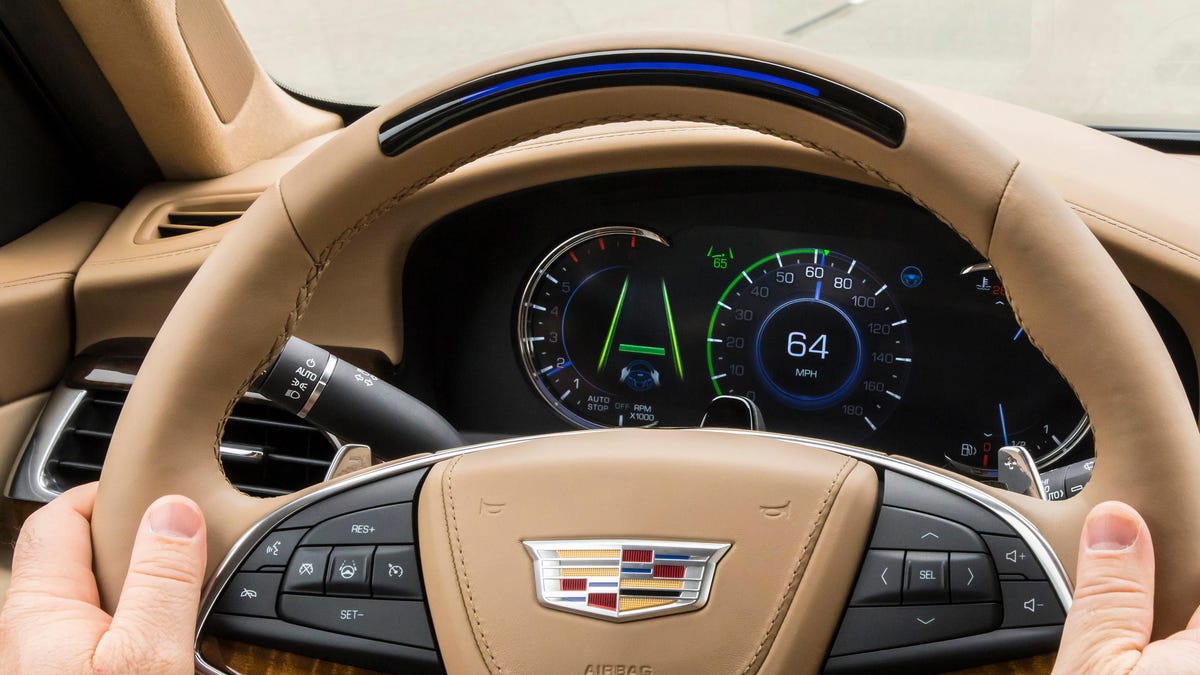Today's lane keeping assistance tech steers the way to self-driving cars
Our next stop on the road to autonomous cars is a look at the lane departure warning and prevention technology that helps modern drivers stay safely in their lanes.

We all like to think we're pretty good drivers that are capable of keeping our cars firmly centered in our lane. However, even the best driver occasionally makes an honest mistake and, let's face it, not everyone on the road is the best driver. Sometimes distractions can lead to a driver momentarily drifting out of their lane. It's embarrassing at best, but can also lead to serious consequences in a worst-case scenario.
Fortunately, modern cars can be equipped with a variety of safety systems that can alert drivers when accidentally leaving their lane, help keep the car in line or even totally take over steering. That said, the current state of the art still requires a driver to keep their eyes on the road at all times; you're not off that hook just yet.
Some lane departure and keeping systems are tied into driver alertness monitors. Cross the line too many times and the car may suggest you take a break.
Lane departure warning system
The most basic level of this technology is the lane departure warning system. A camera mounted at the front of the car, usually at the top of the windshield, looks ahead to detect the lane markers on the road. If the system detects the car is crossing out of its lane without the the turn signal activated then you'll be alerted with a beep or buzz.
The warnings are so simple that there's not so much to differentiate them. Either it works or it doesn't. Some systems feature haptic feedback such as vibrating the steering wheel or, in some General Motors vehicles, even vibrating the seat cushion. Those could be nice if you find audible alerts annoying.
Interestingly, lane departure warning systems can even be added via aftermarket equipment. Some dashboard cameras, such as the Garmin Dash Cam 65W, support the function with audible and visual alerts. There have even been attempts to replicate the functionality through mobile apps like iOnRoad with varying degrees of success.
Lane keeping assistance system
Lane keep assistance systems build on the warning with intervention. So when you start to drift out of your lane, the assistance system will steer you back in line. The crudest systems use bias braking to pull the nose of the car back in line. However, more modern systems use the car's electric power steering to make small, fine-tuned corrections to vehicle's path.
In either of these cases, the driver can override the intervention simply continuing to turn the wheel in the desired direction, so if you meant to change lanes or are making an emergency evasion, the system should not fight your intentions.
We prefer newer system with steering assist to bias braking. We also look for systems that don't throw a lot of false alarms. The last thing you want is your car's steering wheel twitching around in your hand.
Lane centering assistance system
Most lane keeping systems only intervene when you start to cross out of your lane, which can cause a sort of ping-pong effect where the car seems to bounce back and forth between the boundaries. The most advanced systems are able to actively center the car in the lane with steering assist.
Examples of this are usually found on luxury vehicles like Volvo's Pilot Assist system on the S90, Tesla's Autopilot on the Model S and the Mercedes-Benz Active Steering Assist system on the new S Class. However, we're starting to see the lane centering creep down to more attainable tiers in vehicles like ProPilot Assist the second-generation Nissan Leaf, which hits the road next year.
The Volvo 90 Series' Pilot Assist system uses steering assist to actively center the vehicle in the lane.
A good lane-centering system should assist the driver without fighting their intention. During my early tests with Volvo and Nissan's systems, I got a bit fatigued working against the assistance. But Mercedes-Benz's system was barely noticeable when I was close to the lane's center, but gently and naturally nudged me back if I drifted.
Best examples: GM Super Cruise
Every system type we've discussed requires you to keep your hands on the steering wheel at all times. Even if the car is capable of maintaining a position in the center of the lane, they all have some sort of hand detection system that checks for human input.
Cadillac's new Super Cruise system is different. If the conditions are right, you can just let go of the wheel and let the car do the steering for you. It's the ultimate in lane keeping assistance. However, while Super Cruise is a hands-free system, it's not an eyes-free one. The driver must stay engaged and looking ahead. A small camera watches the driver's face to ensure they're watching the road and ready to engage in an emergency. Still, it's about as far along the road to autonomy as it gets in modern production cars.
How Cadillac's Super Cruise worksWe took a ride with Cadillac's Super Cruise the other day and were impressed with its refinement.
Posted by RoadshowAutos on Thursday, June 29, 2017
Be sure to check out the rest of our guide to advanced driver aid technology to learn more about how modern and future cars help make driving safer and more convenient.

